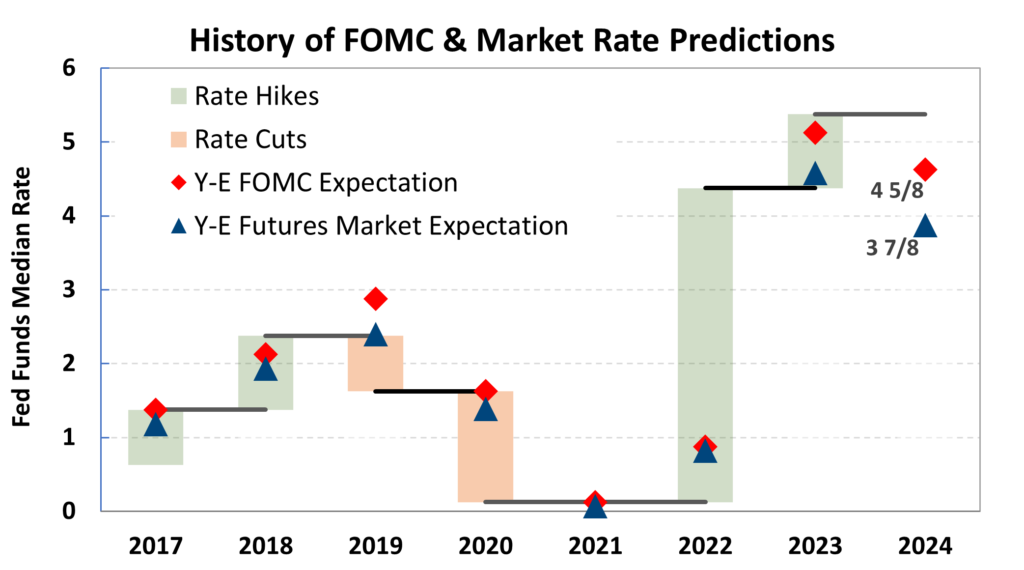
There are two primary sources for advanced predictions on the future path of short-term interest rates, the Fed Funds Futures market and the FOMC dot plot projections. On December 13th, the FOMC updated its policy rate projection, lowering its year-end 2024 expected Fed Funds rate to 4.6% (three 25 basis point rate cuts) from the current 5.3% rate. The futures market had already been expecting three rate cuts in 2024, but after the Fed announcement, the market expectation grew to six rate cuts.
In the chart below, we examine the accuracy of the FOMC and futures market’s past annual interest rate predictions. Predictions have been generally accurate in years when the economy unfurls as expected, such as 2017. However, during and after Covid, it has become more difficult to forecast the economy and monetary policy, and the accuracy of both the futures market and FOMC have become less dependable. For example, in 2020, Covid shutting down the global economy forced the Fed to slash rates far beyond expectations. Then, during the recovery in 2022, the FOMC and market consensus was that inflation would be “transitory.” Inflation proved to be more durable than expected, which led to wide underestimation of the size of the rate increases to follow.
Implicit in the FOMC’s current expectation of three rate cuts next year is that there will be a “soft landing” for the economy, where the inflation lion is tamed without a harsh recession. The futures market is expecting larger rate cuts, believing that there is a marginally higher chance of a hard landing than the Fed projects.
In the post-covid, inverted yield curve, higher inflation volatility, and election year climate of 2024, it is harder to have certainty around economic forecasts. The “soft landing” scenario is the consensus viewpoint for 2024, but recent history illustrates that events this year are more likely than not to surprise markets and policymakers.